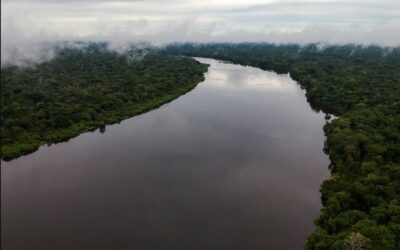The proposal sent by ACTO includes four lines of action for the implementation of Annex II of CITES for Cedar
The Amazon Cooperation Treaty Organization, through the Bioamazon Project, forwarded to the ACTO Member Countries the Final Report of the consultancy “Training and Support to ACTO Member Countries in the development of Non-detriment findings (DENP) and inclusion of Cedrela spp. in Appendix II of CITES, which includes the basic proposal of the Regional Action Plan for the implementation of CITES for tree species in the Amazon region.
The initiative is the result of a series of activities that the Bioamazon Project has been implementing since 2020 to optimize the protection of tree species of commercial value, such as mahogany and cedar, which are protected by the Convention on International Trade in Endangered Species of Wild Fauna and Flora (CITES).
Since August 28, 2020, the inclusion of the genus Cedrela in Appendix II of the CITES has been in effect, with Note #6 (Neotropical populations), whose proposal was presented by Ecuador and approved at the eighteenth meeting of the CITES Conference of Parties (CoP 18), held in 2019 in Geneva, Switzerland.
One of the fundamental requirements established in the text of the CITES Convention for the regulation of trade in species included in Appendix II, is that a Scientific Authority of the State Party to the Convention declares that an export, import and/or re-export will not harm the survival of a regulated species by CITES. These mechanisms of analysis and evaluation have become known collectively as Non-detriment findings (DENP).
Cedrela is a tree genus of the Meliaceae family, composed of 17 species widely distributed in tropical and subtropical regions from southern Mexico to southern Argentina. C. odorata, commonly known as cedar, red cedar, bitter cedar, pink cedar, is the most widely distributed species of the genus, found throughout the Amazon basin. The wood of this species is considered the second most valuable in Latin America and the Caribbean, being highly appreciated in international trade for its high quality, workability, durability and easy drying.
Action Plan
The basic proposal for a Regional Action Plan for the implementation of Cedar in CITES Appendix II was developed with contributions from consultant César Beltetón – Agronomist in Renewable Natural Resources, Master in Species Management and Conservation in International Trade, who for more than for ten years, he has worked with CITES on tree species – with the National Technical Focal Points of member country institutions and other experts on the subject.
The plan foresees four lines of action. The first proposes the creation of a regional governance structure within the scope of ACTO with the participation of CITES Authorities and Forestry Authorities of the Member Countries, in addition to formulating and administering, in coordination with the PS/ACTO, projects aimed at the effective implementation of CITES for tree species in the region.
Through the second line of action, it will seek to generate scientific information to support the formulation of DENP for the Amazonian tree species listed on CITES. The third line of action will lead to the systematic observance of compliance with the legal norms related to the application of CITES for the Amazonian tree species listed in the annexes to the convention. Finally, the fourth line of action will seek to strengthen the capacities for effective application of DENP aimed at Amazonian tree species listed on CITES.
The Action Plan was one of the results of a set of activities to support Amazonian countries. Among the activities carried out are the regional workshop on DENP with representatives of Member Countries; bilateral meetings to survey national needs and information; and the webinar «Management of neotropical tree species included in CITES» on World Wildlife Day.
Among the main needs identified by the Member Countries, and which will be the subject of future work, are the taxonomic research of species of the Cedrela genus and the updating of the «Electronic Key for the Identification of Commercial Timber Species in the Amazon»; studies that allow the evaluation of the population dynamics of Cedrela species in the medium and long term; the elaboration and implementation of a training plan on the application of CITES and DENP for tree species regulated by the Convention and the strengthening of good governance and product traceability systems regulated by CITES, among others.
Published in the Bioamazon Newsletter, issue n. 8, March-April 2021.











